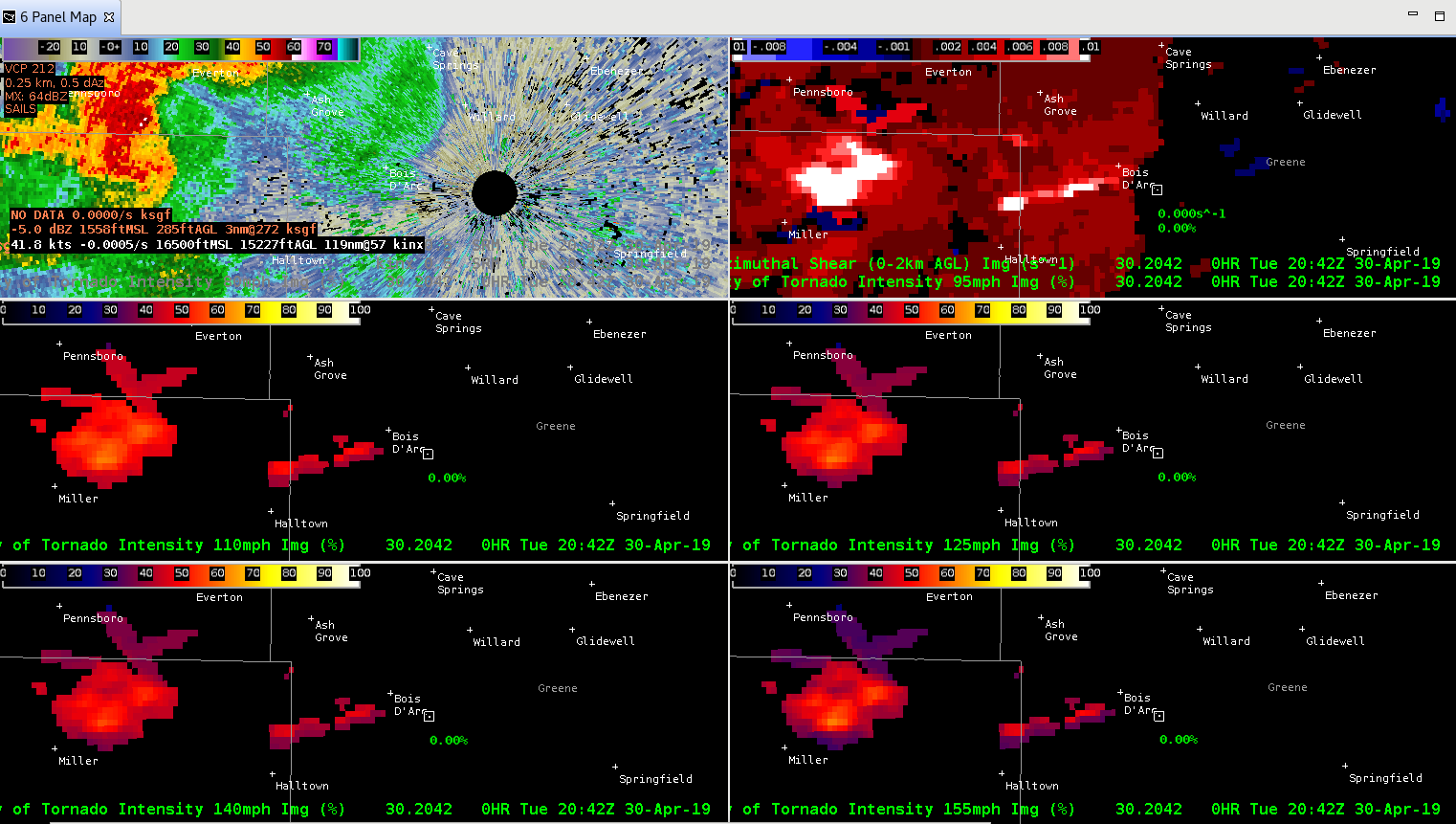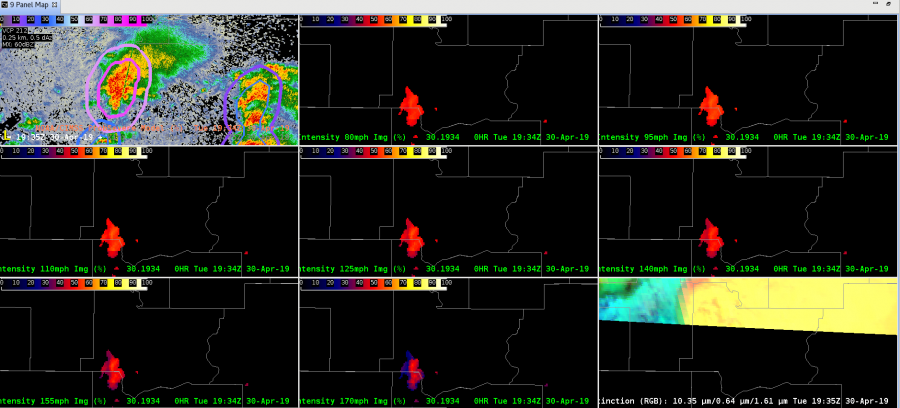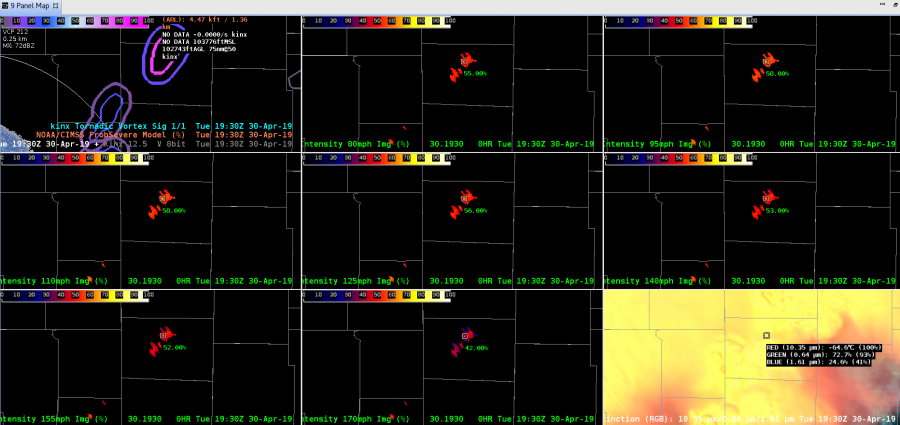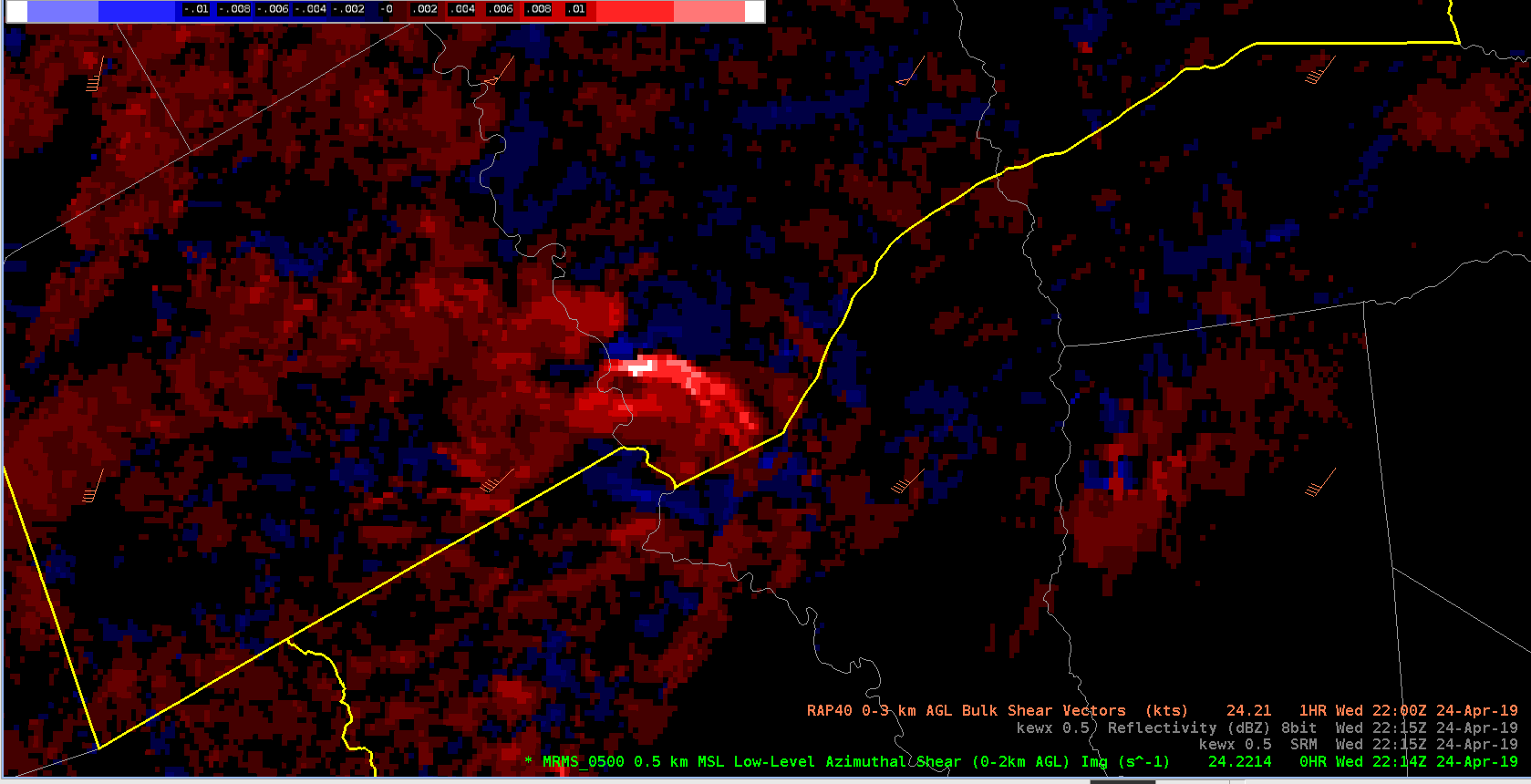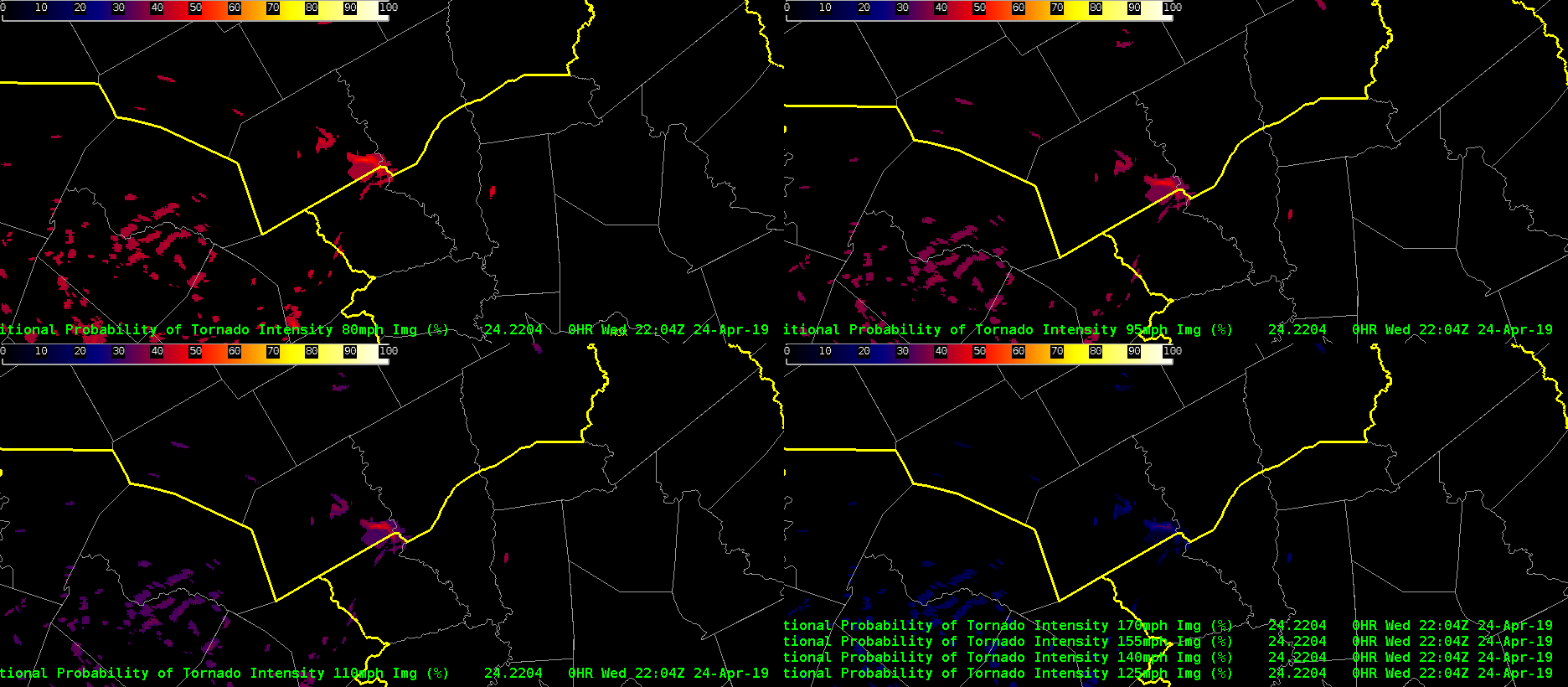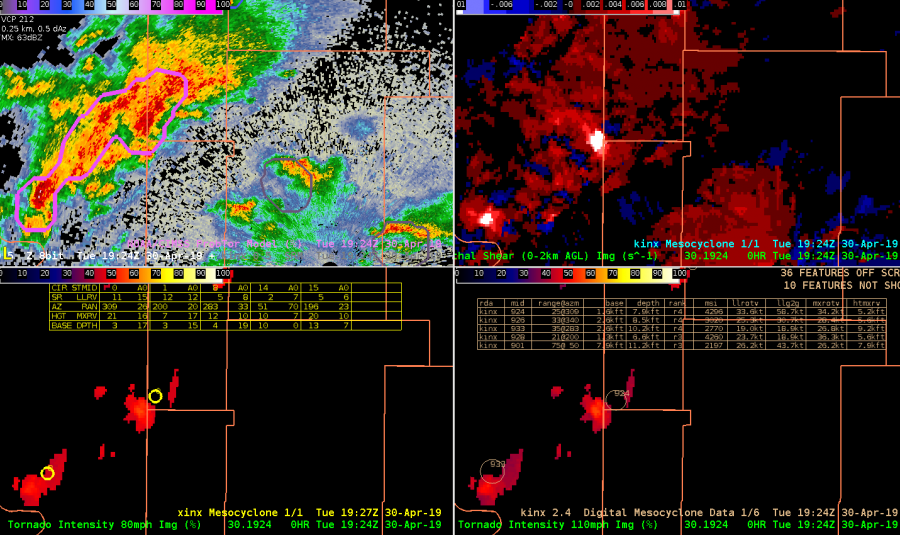
Tracking this northern most SC @ 1926 UTC prior to tornadogenesis. Azshear 0-2 km product did a nice job highlighting shear with developing storm very early on in storm evolution and was very persistent in highlighting area of shear throughout. Temporal continuity was very good. Lower two panels are 80 and 110 mph intensity probabilities. Used this 4-panel to monitor evolution. Also displayed is legacy mesocyclone (upper-right), DMD (lower right) and XDMD l(lower left). This SC also exhibited well-organized ZDR arc and KDP foot (not shown) that whose centroids were normal to storm motion suggesting MC intensification was likely.
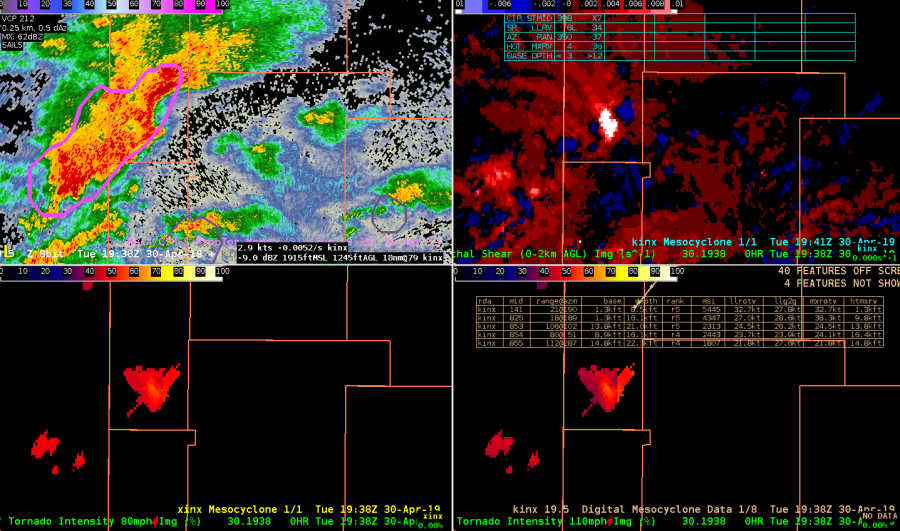
1938 utc Azshear still showing strong signal with CPTI gradually increasing to near 60%. ProbTor increased to 78% as well. DMD, XDMD and MD not showing much and did not seem to be very helpful.
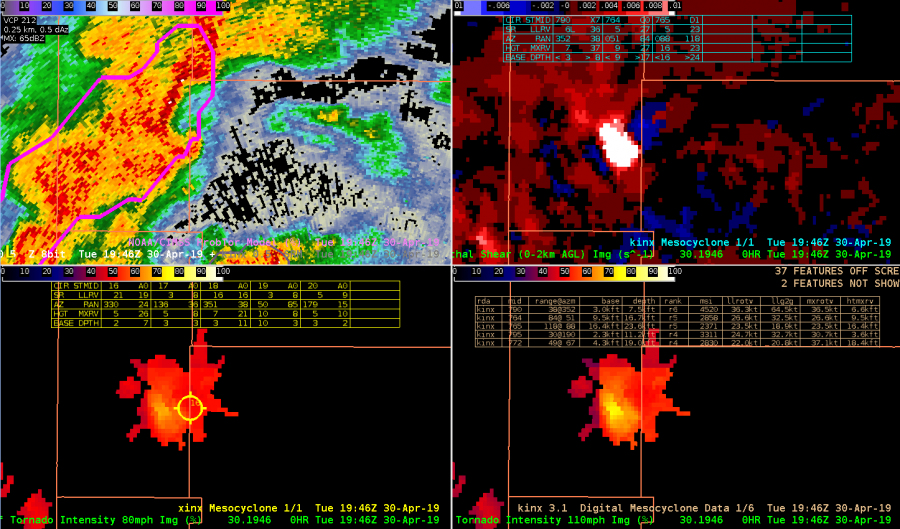
CPTI was insightful with increasing probabilities of tornado intensity probabilities at higher speeds (110 mph lower right). Note that XDMD was also indicating MXRV of 26.
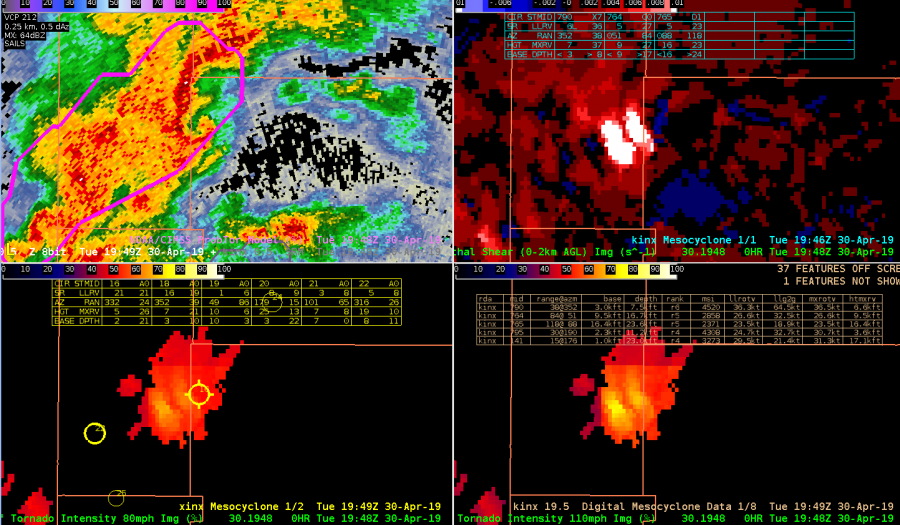
1448 UTC – would occasionally see dual maxes in AZShear and CPTI products that was a bit of an issue at times.
CPTI 110 probablities up to ~ 75 % at this time (lower right)
Overall…0-2 km Azshear was quite helpful in quickly grabbing attention to areas of concern. 0-2 km product was temporally very consistent. Its location relative to developing Mesocyclone was typically off…but still very useful. XDMD, did seem to perform better than legacy DMD products but not much at least with this storm. Early in storm evolution, examining ZDR/KDP centroids relative to storm motion was also helpful as a reality check on MC intensification and increasing SRH with this particular storm. Bottom line was generally pleased wiith AzShear and CPTI performance for this storm. – Quik TWIP

